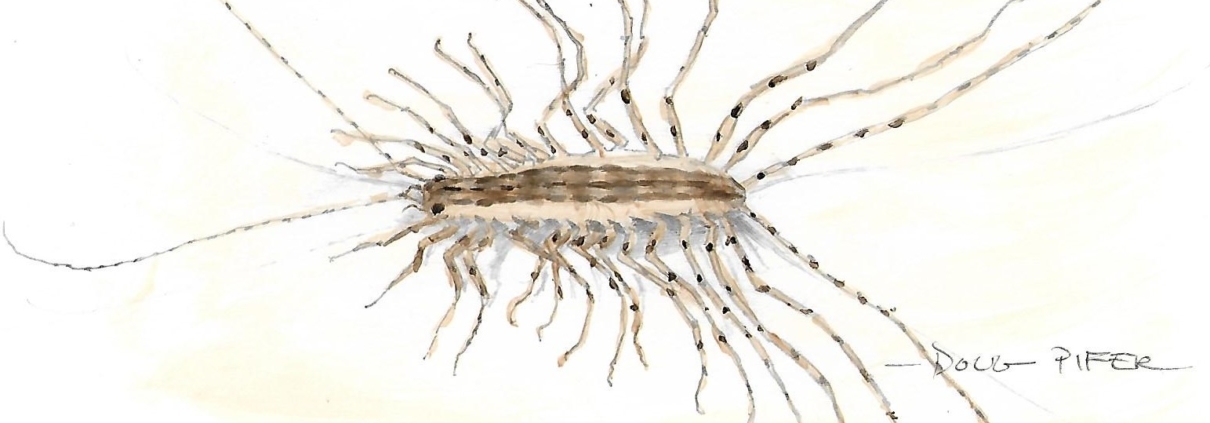Praising The House Centipede
by Doug Pifer
I was one of the boys in charge of stacking the books in the back closet of the school room on the last day of second grade. That’s when my first house centipede ran across the floor and under a bookcase. Girls shrieked. Boys whooped. Our teacher, a gray-haired lady wise to the ways of children, patiently explained this was a house centipede, and that it was completely harmless and simply disturbed because we invaded its secret hiding place.
Since that day I’ve been a house centipede fan. Its angled legs carry it gracefully across a wall or floor. The long legs move in waves like synchronized dancers. The creature is a wonder of engineering. The delicate antennae and the hindmost pair of legs of a house centipede are extremely long, so neither prey nor predator can be sure if the centipede is coming or going. Its movements are lightning fast and can change direction in a second.
The animal is tough and resilient, yet so delicate it’s almost impossible to catch one without breaking its legs and destroying it. Its love of darkness and its ghostly transparency add an air of mystery and fantasy. As a wordsmith, I appreciate the scientific name, Scutigera coleoptrata. A tongue-twister, the species name defies both autocorrect and spell check. It’s not coleoptera, the order of beetles, nor Cleopatra, queen of Egypt.Despite my fondness for this creature, I’ll admit there’s an undeniable creepy factor that freaks many people out. With 15 pairs of legs, accentuated by dark and light banding, a house centipede can be imposing.
I’ve heard brave people call it the scariest thing they ever saw. The biggest adult females are four and a half inches long, the legs contributing to almost half that length. Shy and retiring as it acts in the open, the creature is a voracious predator on small invertebrates such as crickets, spiders, and beetle larvae. After running its prey down, it gathers it up in the segmented tips of its legs. Then it injects venom into its prey with tweezer-like fangs to immobilize it. The fangs of a house centipede are too weak to penetrate human skin.
Having lived in a succession of old houses, my wife and I have always been at peace with house centipedes. If you have a house with a cellar or crawl space, you’re likely to harbor a few of these characters there. Their presence is not harmful to the house or your belongings. If you can seal all cracks in walls and floors between your damp cellar and the living area of your house, you’re less likely to encounter these leggy creatures.Centipede, meaning “hundred legs,” is a charming exaggeration.
A house centipede adult in perfect condition has only 30 legs. Immatures just hatched have four pairs and somewhat resemble crickets. As they grow, their leg pairs increase from 6 to 8 to 10, until they are adults.










